- Tape Measures
- Fractional Inch
- Decimal Inch
- Metric
- Steel Rules
- Inch
- Metric
- Specialty Rules & Tapes
- Pi Tape
- Glass Rles
Tape Measures
Fractional Inch
The most common tape measures are graduated in 1/16 inch increments.
Tape measures have limited use in the machine shop. The typical resolution of 1/16 or 1/32 of an inch is only useful for selecting stock and sawing to oversize dimensions.
Tape measures are designed to be used with the metal hook on the end. The hook is mounted on slots so that it can move in or out to compensate for its own thickness. When measuring from the end of the tape measure, it is necessary to use the hook.
It is common for a dropped tape measure to land on this hook and bend it, so be sure the hook is not bent before using the tape. A bent hook will affect the measurement by a significant amount.
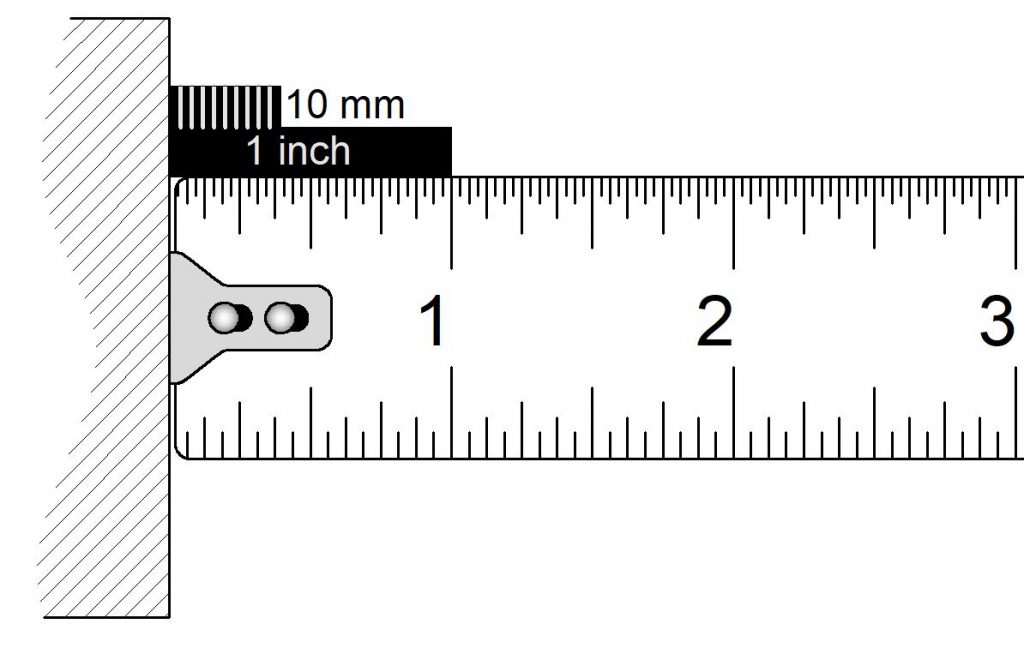
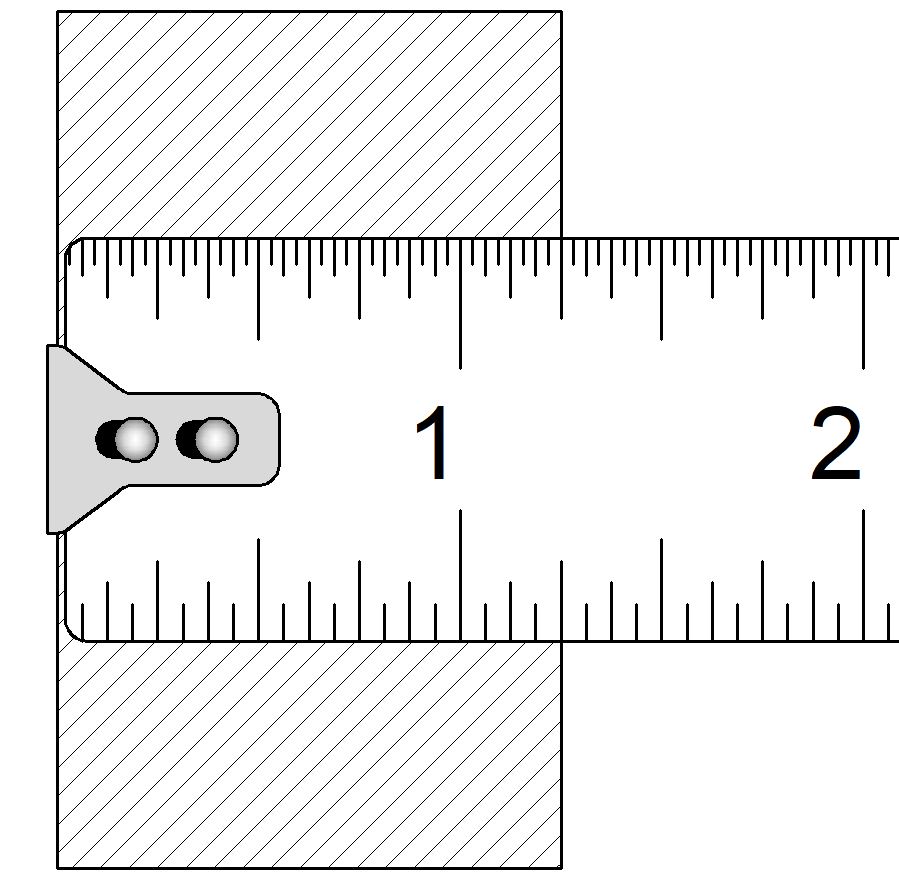
Decimal Inch
Tape measures are available in decimal, often in 1/50 or .02 increments. These have scales similar to the ones normally found on steel rules. These are discussed below.
Do not confuse decimal inch rules and tape measures with metric. These are not the same thing.
Steel Rules
Inch
Steel rules are useful for for limited applications in a machine shop. They often have graduations ranging from 1/8 to 1/100 of an inch.
Steel rule graduation styles can be categorized into different styles for quick reference. See wikipedia.org article.
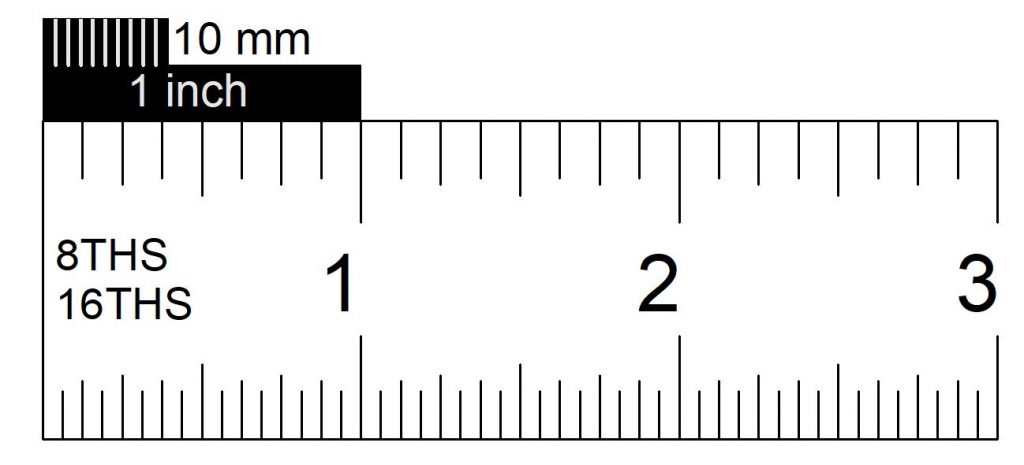
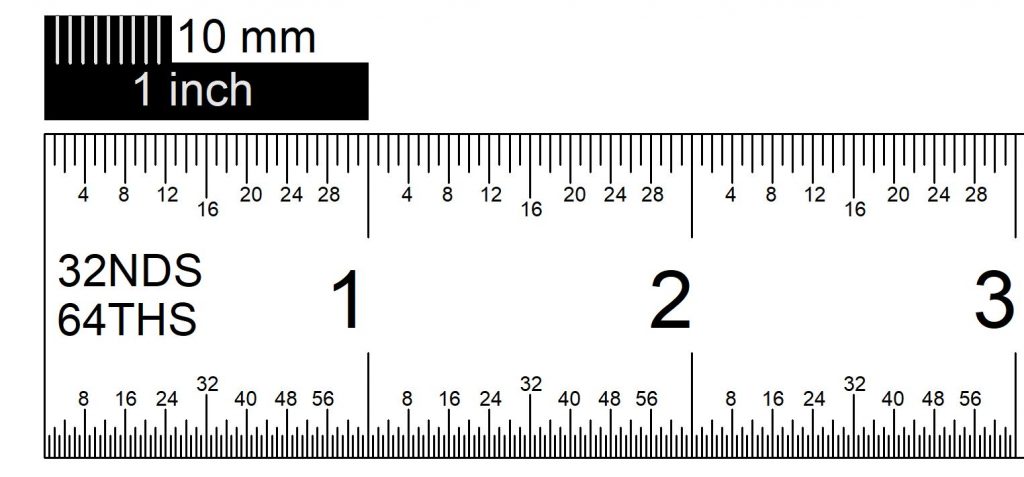
Some are graduated in decimal parts of an inch, and are available with resolutions of the following:
- 1/10 (.01)
- 1/50 (.02)
- 1/100 (.01)
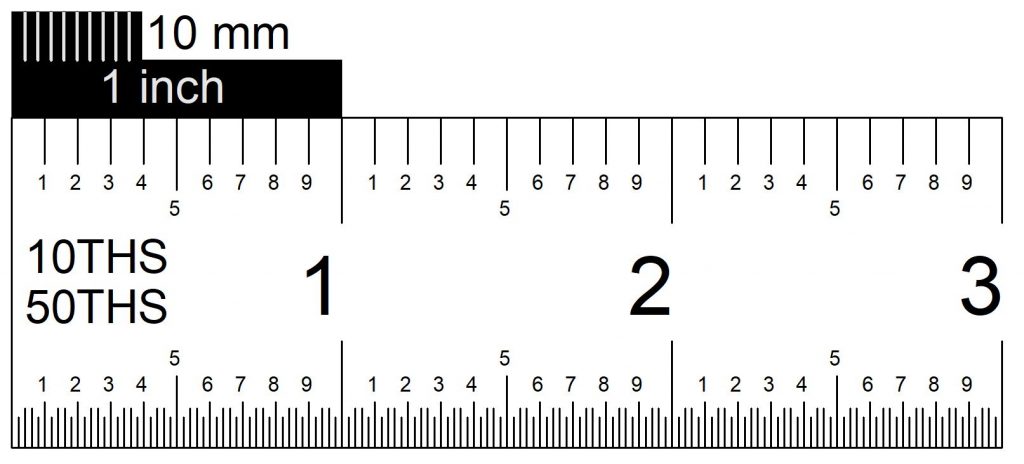
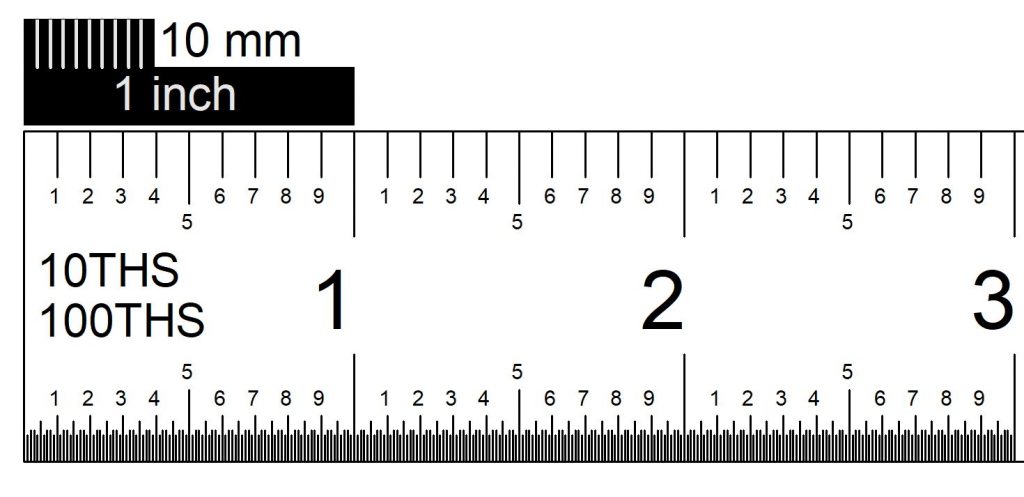
Metric
Metric machinists rules and tape measures are typically graduated in 1 or 0.5 mm increments.
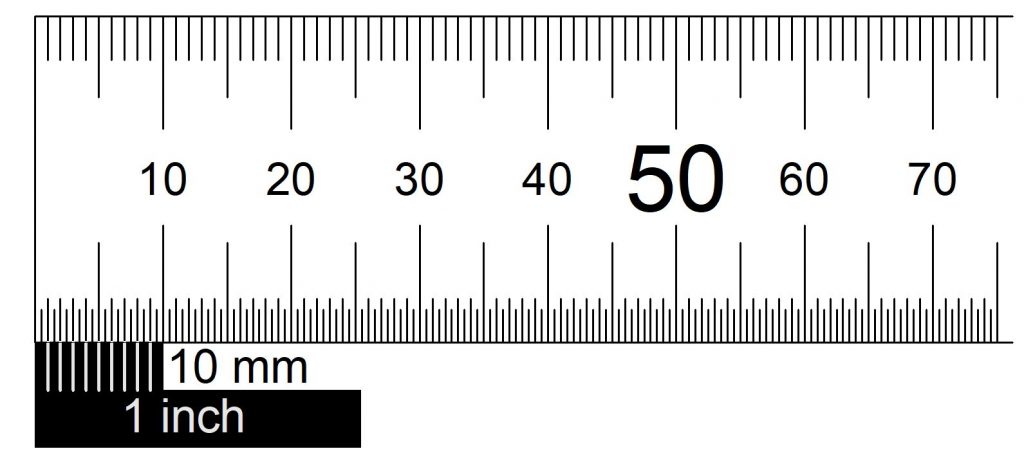
Specialty Rules and Tapes
Pi Tape
Pi tapes are used to measure a large cylinder’s diameter indirectly by measuring the circumference. Since the circumference of a circle is equal to π times the diameter, the graduations on a pi tape have been enlarged by a factor of π (3.14159…). Many pi tapes have a vernier scale to improve precision.
Glass Rules
Glass rules can be used with optical equipment such as microscopes and optical comparators for checking magnification and movement accuracy.


Recent Comments